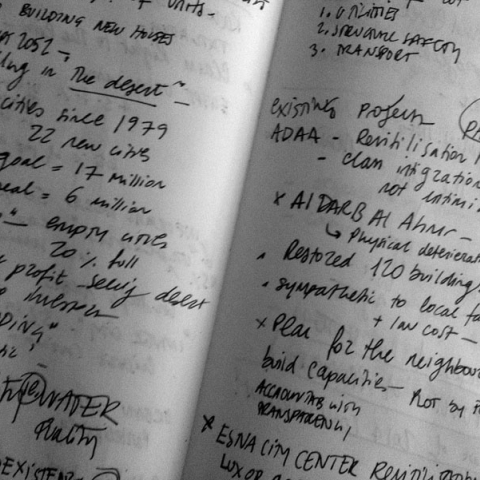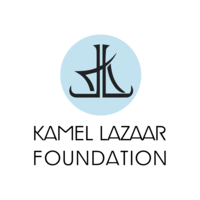How do instances of groups practicing according to principles of self-organisation co-exist, develop, depart from the hegemonic mode of production and housing? How do spaces exist outside the legislative framework which binds us all to the social contract? And how has this legislative framework been increasingly adapted to legitimise neoliberal practices in both Europe and North Africa?
In 1649, a group of agrarian socialists known as 'the diggers' lead by Gerrard Winstanley, began to illegally cultivate common land in England in order to render the 'commons' (where only grazing was traditionally allowed) a productive space, not only a space of passive resistance but a site of productive public 'ownership'.
How is 'property' intended in this case? Property in this case is simply declared as such, the productive commons is a 'property sans-papiers'. The use of land comes with rules but not necessarily with a pre-established 'Law'; while 'Law' is instead imposed to legitimise the dispossession, and enclosure of what was once 'common' land. In this ontological tension between the realm of property and the commons, forms of self-managed productive land/ housing occupation engender both a polemic against private ownership, whilst offering the occupiers a function: as a house, as land to farm, a productive, self-managed tool which provides financial autonomy, shelter and a means of subsistence. These questions necessarily become more urgent in moments of global economic and political crisis, where alternative forms of wealth, distribution in labour (such as worker cooperatives) and housing (squatting) become crucial and necessary spaces of re-appropriation causing a divergence from the predominant [R]ule of capital accumulation.
The island of Gezirat al-Qursaya, situated in central Cairo, is a unique example of this tension. The colony, formed by farmers, fishermen and their families, has existed since time immemorial without ever having formal deeds to the land. As the island is situated in a prime real estate location the inhabitants have frequently been threatened with military occupation and forced redevelopment, which would permanently displace it's population. Recurrently in the local news because of the fierce resistance to forced eviction, the island and its inhabitants are symbolic of the ongoing struggle over the significance of the notion of ownership and what that struggle engenders ideologically, not only locally but on a wider scale.
For the initial version of this project, I will work closely with a group of inhabitants of the island through a filmed workshop. During the workshop, the inhabitants will be encouraged to discuss their ideas of ownership related to the particular history of the island but also looking at current definitions of property in folklore, the real estate market and Egyptian property law collected during the research period. Through the workshop and debate the inhabitants will produce a collective definition of what ownership means and this definition will be painted on the side of one of the buildings on the island, making it visible from the rest of the city, from which the island is traditionally disconnected. The resulting video installation will be exhibited in Beirut, Cairo in December 2014, alongside material produced during the research phase and the workshop.
About the artist

Adelita Husni-Bey is an artist and researcher. Born to an Italian journalist and a Libyan architect in 1985, Adelita studied Fine Art at Chelsea School of Arts and Photography and Sociology at Goldsmiths University. Her practice, which encompasses drawing, painting, collage, video, and participatory workshops, concentrates on micro-utopias, and on how collective memory works, as well as questioning the mechanisms of political and economic power and control.
Her background in sociology as well as fine arts aided her in her critique of prevailing systems of organization of advanced capitalist societies, in areas such as labour, schooling and housing. She questions the type of visibility present in the production of artwork about 'under-represented communities' and looks for alternatives, as a form of reaction to the way Western society is structured. In that sense, her role as an artist strives to instigate reflection on, and effectively produce, alternative social imaginaries.
Recent projects have also focused on unearthing and re-thinking radical pedagogical models within the framework of anarcho-collectivist studies. Her solo shows have included The Green Mountain, ViaFarini/DOCVA, 2010, Deadmouth at Galleria Laveronica, 2010, Playing Truant, Gasworks, 2012. Selected group shows include: TRACK, S.M.A.K museum, 2012, Mental Furniture Industry, Flattime House, London, 2013, Jens, Hordeland Kunstsenter, 2013, Meeting Points 7, MuKHa, Antwerp, 2013, 0 Degree Performance, Moscow Biennial 2013, What is an Institution? Beirut Season 4, Cairo, 2013, We Have Never Been Modern, Songeun Art Space, Seoul, 2014, Giving Contour to Shadows, Neue Berliner Kunstverein, Berlin, 2014, Utopia for Sale?, Maxxi Museum, Rome. She has been featured in International Art-related press such as Flash art, Modern Painters, Ibraaz, Mousee Magazine and Frieze, as well as international newspapers The Guardian and Corriere Della Sera. She has recently completed the Whitney Independent Study Program in New York and is working with Italian schools to foster a critical understanding of the economic crisis by teenage students.
